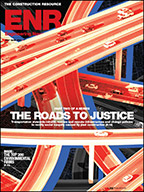Owners and contractors, even when they operate in the same country, don’t always speak the same language. An owner may presume its customary construction practices and assumptions are applicable in any region; the contractor may not fully appreciate the owner’s standards for quality, safety, coordination or other considerations and how they should apply to a specific project. A consulting engineering firm, which operates with a foot in both worlds, best serves its client when it promotes clear communication between client and contractor. The consultant that understands the expectations of both its client and outside stakeholders will provide good stewardship of the client’s money, building a relationship with the client that will make the project successful and may open the door to opportunities for repeat business.
Clear communication is critical from the very earliest stage of a project. Engineering and design work on a pipeline project (including mapping and GIS deliverables) typically constitutes less than 5% of a project’s total installed cost (TIC), yet this work is the foundation for the entire project. Equipment and material purchases, environmental/right-of-way acquisition and costs, construction methods and costs—90% of a pipeline project’s TIC—are influenced by decisions made in the engineering and design phase.
Defining the optimum level of detail while maintaining a high level of quality for engineering and design deliverables can be a challenge. An engineering consulting firm preparing a proposal must provide enough detail, at a high quality, so that appropriate equipment and material can be purchased, permits and right-of-way can be secured, and the pipeline can be constructed safely and efficiently.
The level of engineering detail for purchasing equipment and material is well defined: Data sheets and material descriptions are standard in the industry. The same is true for environmental permit acquisition. Stakeholders, including federal, state and local regulatory agencies, have set minimum criteria for information required on deliverables. Subject-matter experts know what information is required in the deliverable package and the format required by the stakeholder. Right-of-way property plat requirements are becoming much better defined. The required criteria may be less well defined than in the permitting process, but there is much less acceptable deviation in information placed on plats than was the case just a few years ago.
Alignment sheets and construction detail drawings are another matter. The level of detail on alignment sheets varies significantly from country to country, region to region and client to client. The role played by geographic conditions in the level of drawing detail is obvious: A prairie has fewer obstructions to note than when building through a metropolitan area. But clients throughout the world vary greatly in their expectations of the level of detail in drawings. Some clients prequalify contractors and make sure that both client and contractor understand the expectations—the “givens,” whether stated or not—in the same way. Those clients then expect very little detail on alignment sheets. Other clients may have to open bidding consideration to anyone interested in submitting a proposal. In this case, nothing is left to interpretation, and the level of detail in the IFB (Issued For Bid) package makes it possible for anyone with basic construction knowledge to understand the requirements of building a pipeline.
The vast majority of U.S. clients work hard to hit that optimum level of IFB deliverable detail while giving the construction contractor enough information to build the pipeline safely and efficiently. These clients prequalify their contractors. They also set an expected level of detail on IFB documents to include appurtenant facilities, stakeholder requirements, construction methodologies and obstructions along the route. However, there are opportunities where we, as stewards of the client’s money, can and should point out opportunities for them to save money on the cost of engineering deliverables while still maintaining a means for the pipeline to be built safely and efficiently. These opportunities can vary from the type software used in preparing the deliverable to the scale used on drawings, to the use of “typicals” for details that are consistent along the right-of-way. It is up to the engineering consultant to question the client and point out where deliverable costs can be reduced. The client can then make a decision on the level of detail. Ultimately, the goal remains to provide enough detail, at a high quality, so that the pipeline can be constructed in a safe and efficient manner. A good engineering consultant can play a central role in making that happen.
K.C. Yost Jr., P.E., is director, pipeline & facilities operations, Wood Group Mustang. Write to him at k.c.yost@woodgroup.com.



Post a comment to this article
Report Abusive Comment